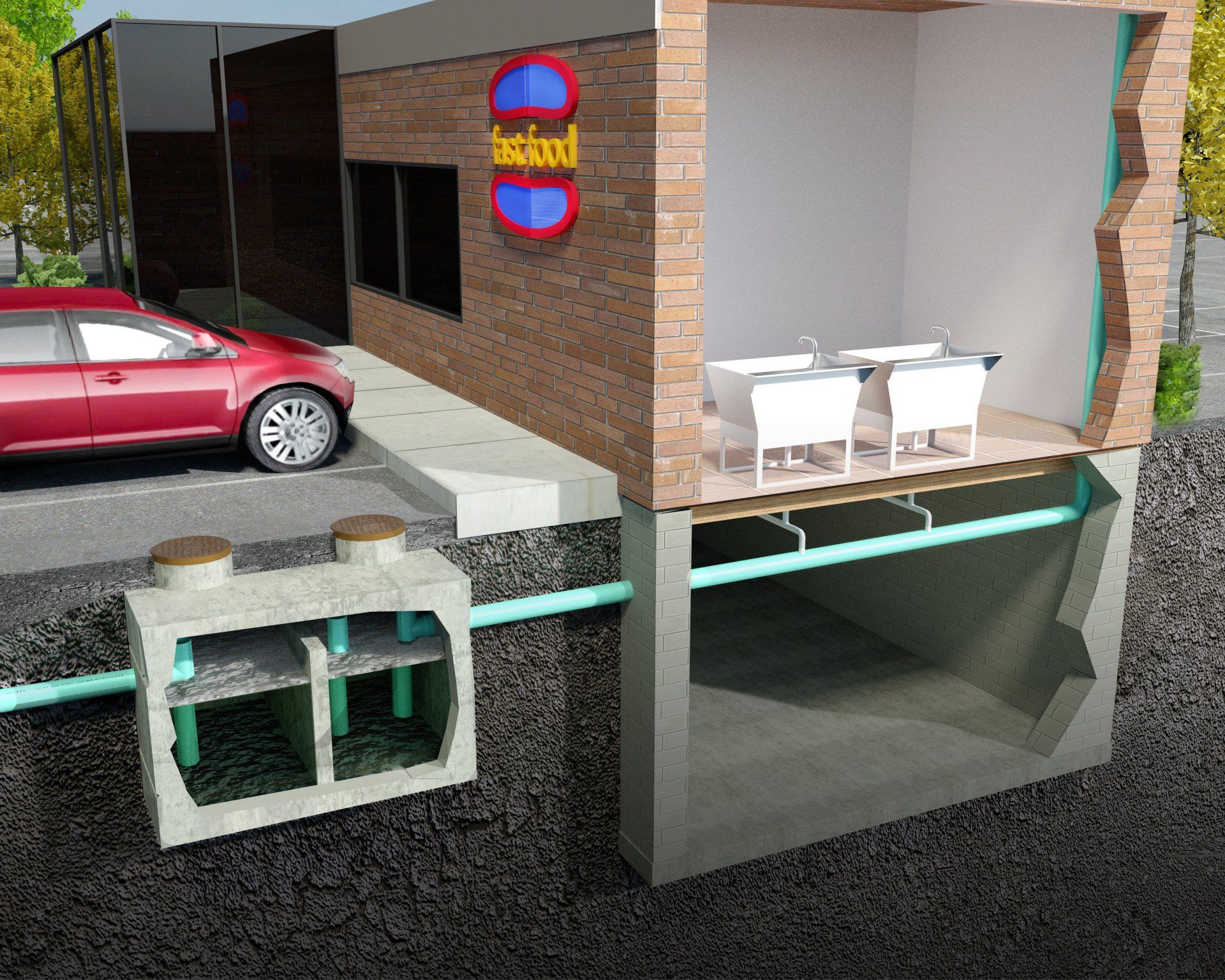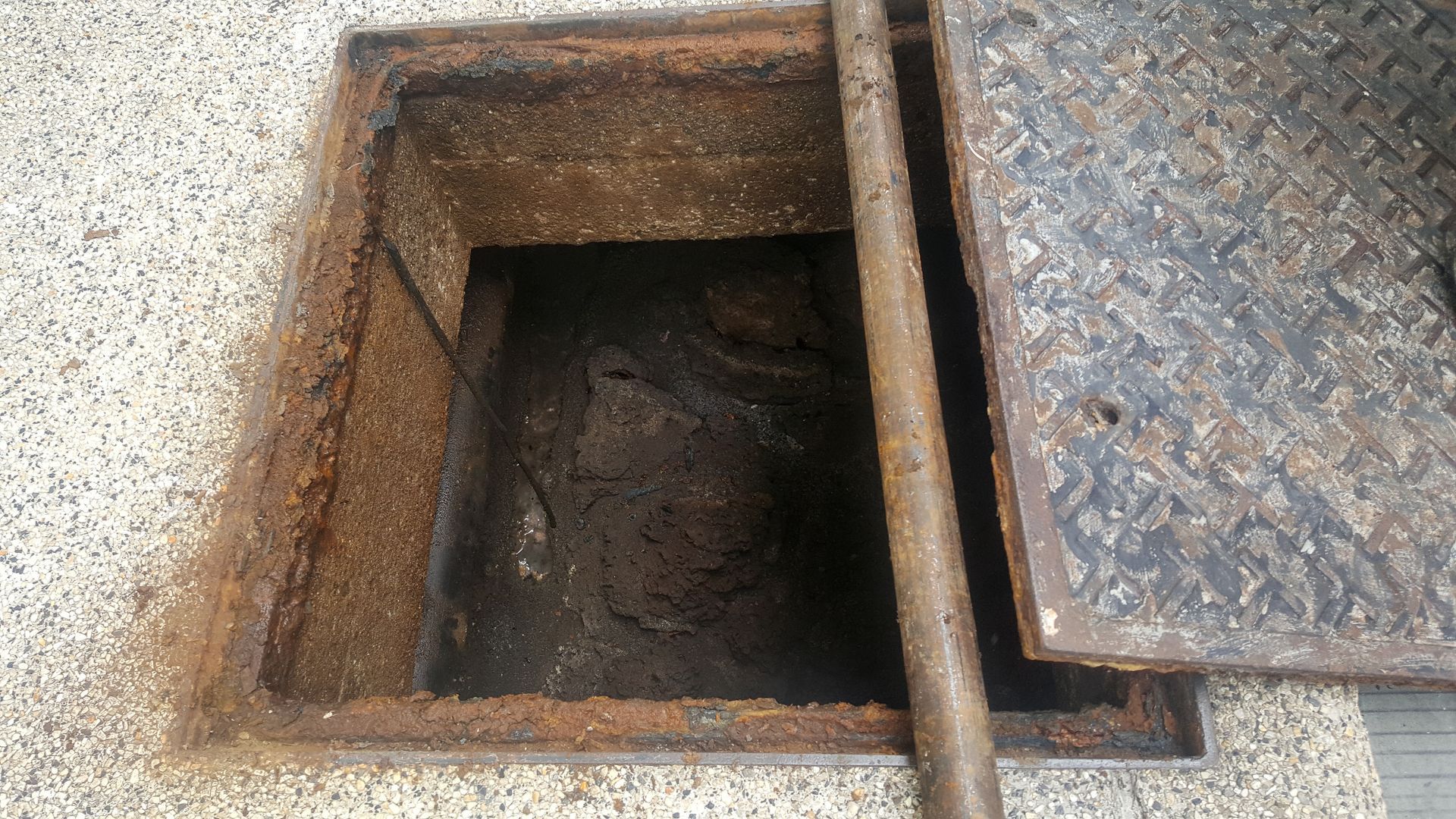Where Is the Best Place to Install Grease Traps in My Establishment?

Businesses and institutions that prepare and cook food must adhere to local rules and regulations concerning fats, oils and grease (FOG) management by having a pretreatment device installed in their commercial kitchens.
Generally, these pretreatment methods take the form of either grease traps or grease inceptors. Both units operate the same way – they allow FOG to separate from wastewater and then trap the FOG in the tank, preventing it from clogging up the sewage system.
The grease-free wastewater continues to flow to the nearest water treatment plant where it can be treated. The pretreatment of water is a necessary, efficient and legally required step. Without a grease trap or a grease inceptor, grease would clog the sewage system, which would require costly and time-consuming repairs that would inconvenience the entire community.
While grease traps and grease interceptors perform the same functions, they do differ in terms of size, capacity, installation method and maintenance. That’s why they are frequently installed in different locations.
Grease Traps
Grease traps are smaller and are generally installed indoors. They are easily accessible and relatively easy to clean. While you may not look forward to cleaning your grease trap, having employees perform cursory daily cleanings can prevent buildup and overflows. Most cities and counties require semi-regular professional cleaning and maintenance of grease traps.
Since they are relatively small, grease traps are usually installed underneath kitchen sinks.
Grease Interceptor
Grease interceptors are much larger than grease traps. They can handle flow rates of more than 50 gallons per minute and are likely a requirement for businesses with medium to high FOG production.
Their size and capacity generally necessitate underground installation outside a restaurant. Installing or replacing large underground grease interceptors can be costly. In many cases restaurants will need to tear up parking lots, back lots or alleys to install these large tanks. Working with commercial plumbers who know how to install a grease interceptor properly ensures businesses avoid expensive and time-consuming replacement or repairs.
What to Consider When Installing a Grease Interceptor
If your business is too big to get by with under-the-sink grease traps, you will have to install an external or underground interceptor. Since your interceptor tank might produce foul odors and will have to be cleaned out by professionals, you must carefully consider its location. You probably don’t want to expose any of your customers to the unpleasant smell.
Draining your grease interceptor is no easy task. You will have to hire a technician to do it for you. He or she will be equipped with a large hose and will use it to remove the grease from the interceptor and then transfer it to a tank truck.
If you’re having trouble deciding where to install your grease interceptor, here are some questions to consider:
- Will the prevailing winds carry the odor in the direction of your facilities or away from it?
- Which location is closest to the kitchen?
- Is there extra space to install the interceptor inside but away from customer-accessible areas?
- Will the location be accessible by truck?
- Are there any alternative locations where you can install the interceptor?
Loading docks are usually optimal locations because they provide easy access to the pumping truck to clean out the interceptor. Since they are wide open, loading docks are also conducive to the wind carrying the FOG odors away from the building.
Grease Interceptor Monitoring System
Once you’ve established the size and location of your grease interceptor, you might also consider enhancing it with a monitoring system.
This proactive device provides advance warning of problems without a manual inspection. It’s comparable to the check engine light in your car – it signals that there’s something malfunctioning within the interceptor. The monitoring system is a low-maintenance tool that prevents blockages and sewer overflows from happening at your business, saving you time and money associated with downtime and cleanup.
Contact Southern Green Industries in Georgia for Reliable Grease Trap Servicing and Cleaning
Southern Green Industries is one of the few green grease trap servicing and waste oil recycling businesses in Georgia. We are proud to be a zero-landfill company that does all our own wastewater processing and waste oil recycling.
We’re happy to contract with local Atlanta restaurants on regularly scheduled grease trap cleaning, but we also offer one-off grease trap cleaning service as needed. Call (404) 419-6887 or fill out our form for a free service quote.
Recent Blog Posts
Contact us Today for a FREE Quote
We are committed to making grease trap cleaning and fryer oil recycling as clean and easy as possible. If you’d like to learn more about our services or get a quote, give us a call at (404) 419-6887.



